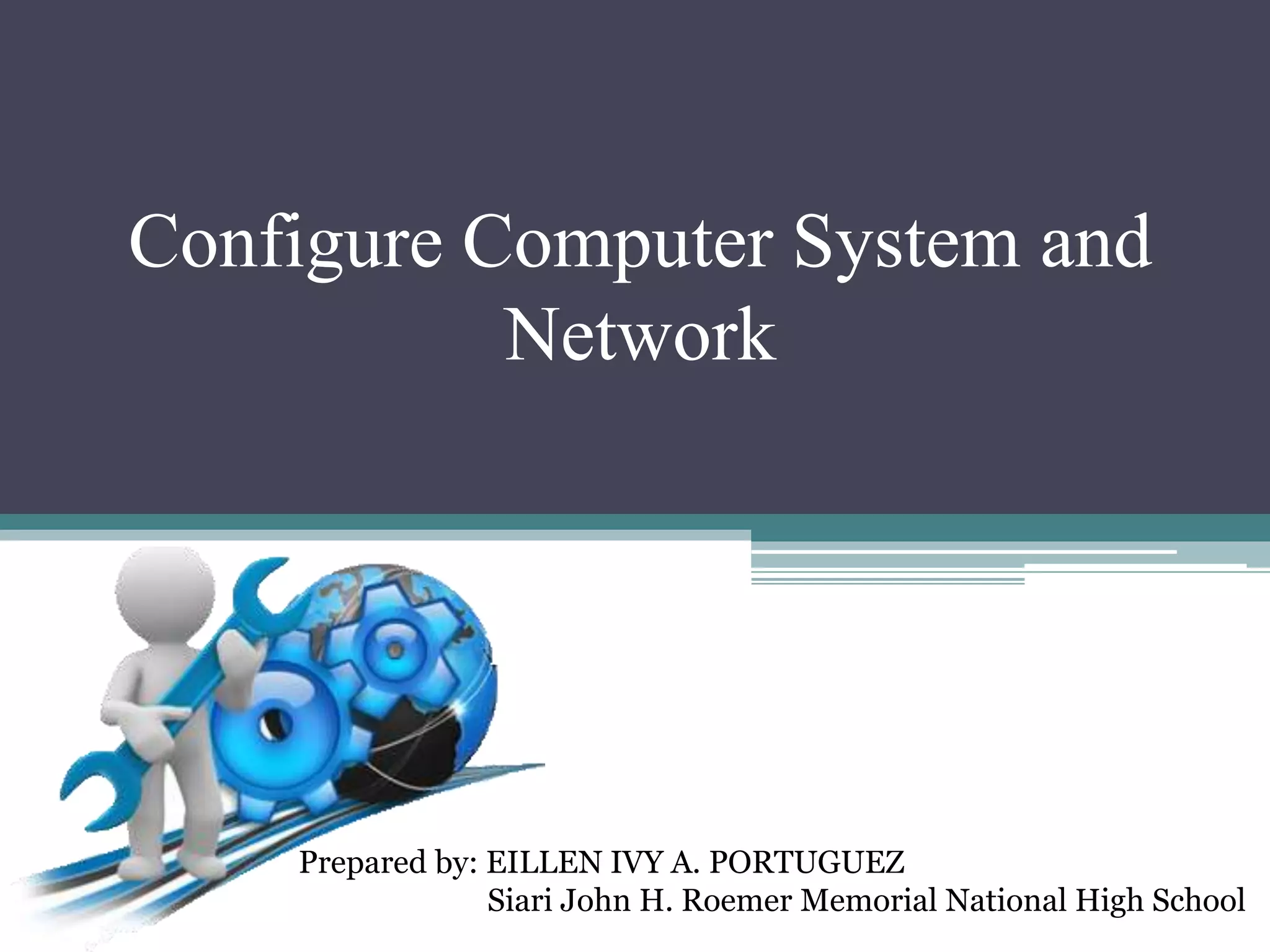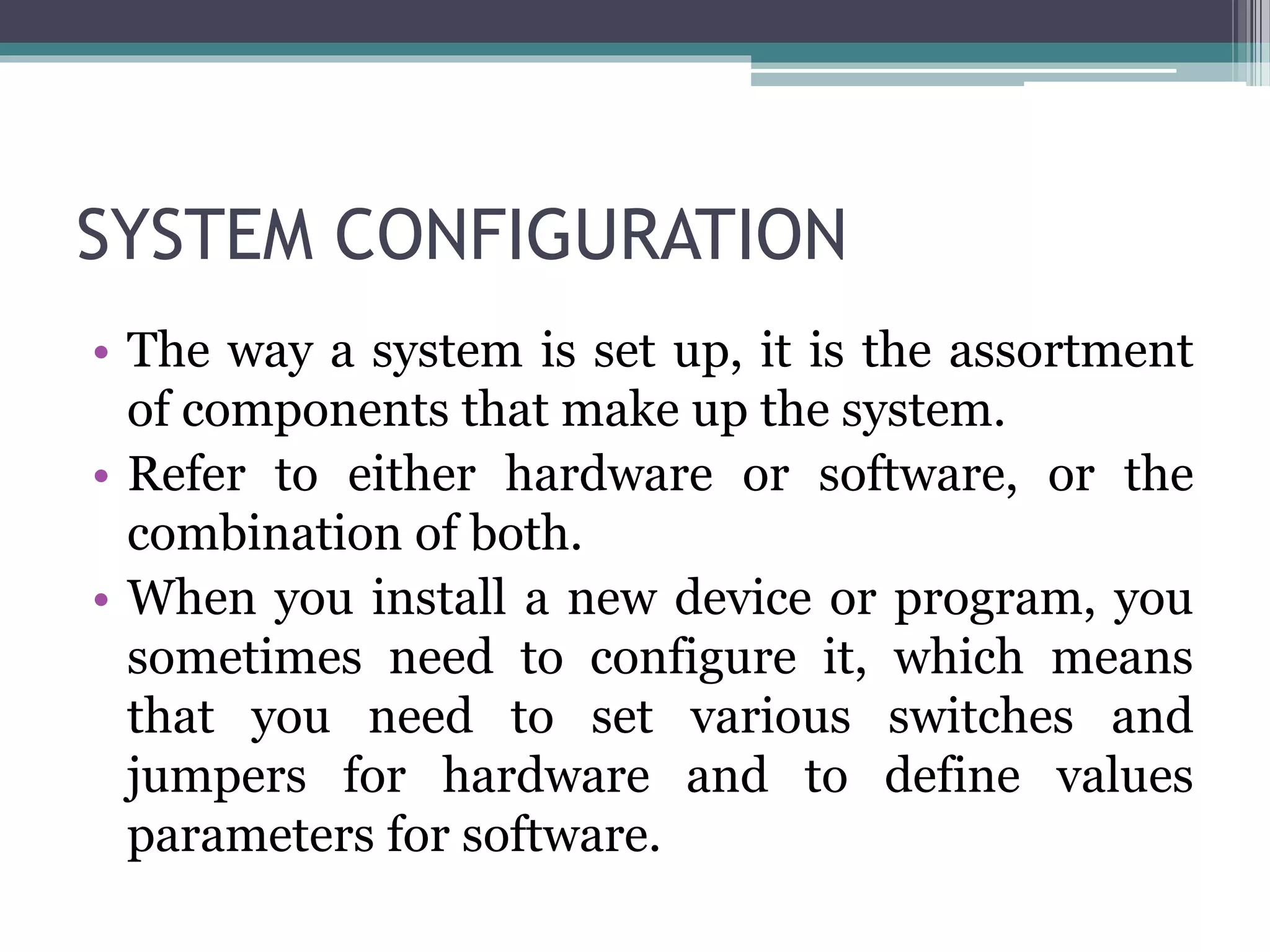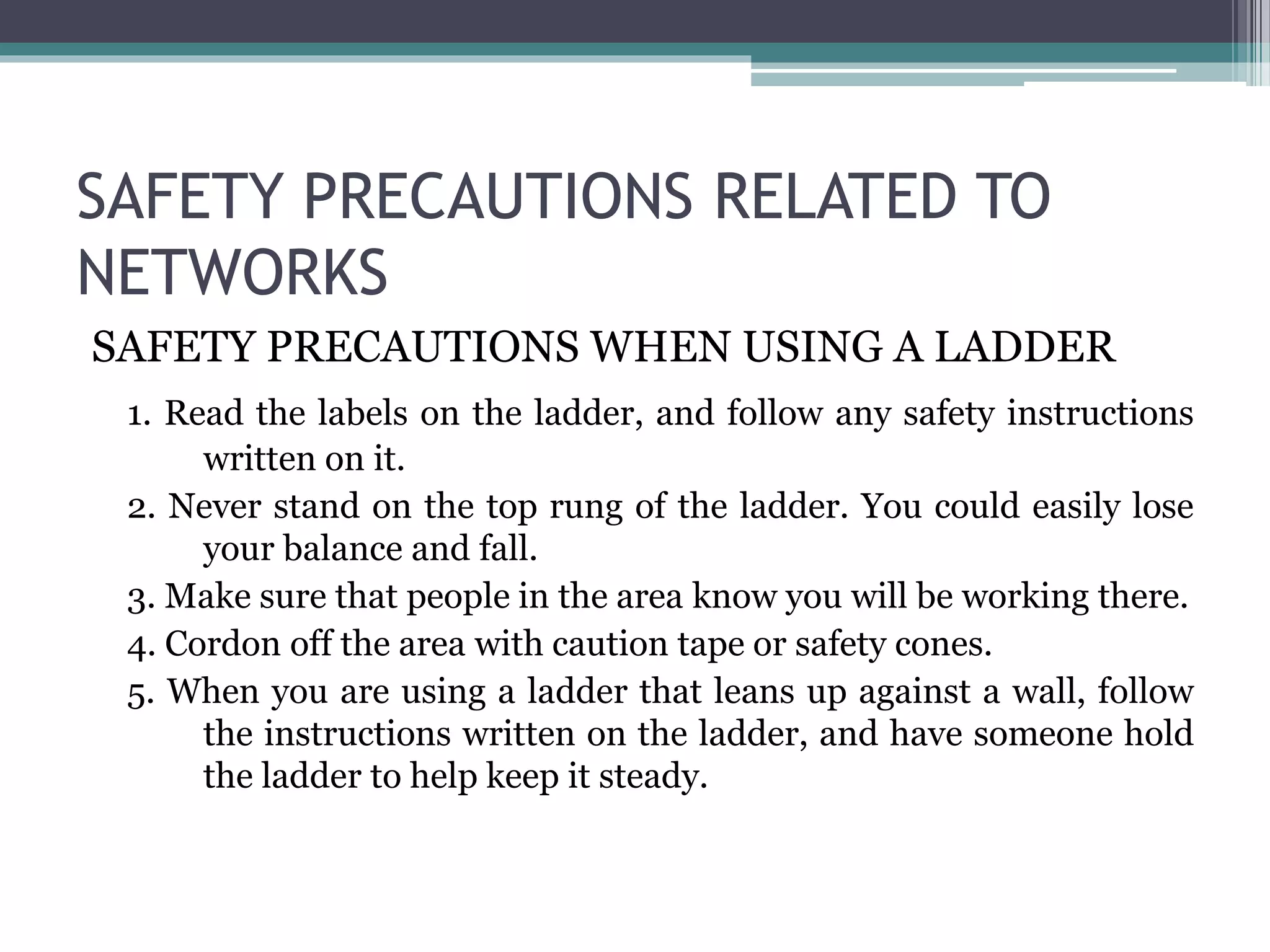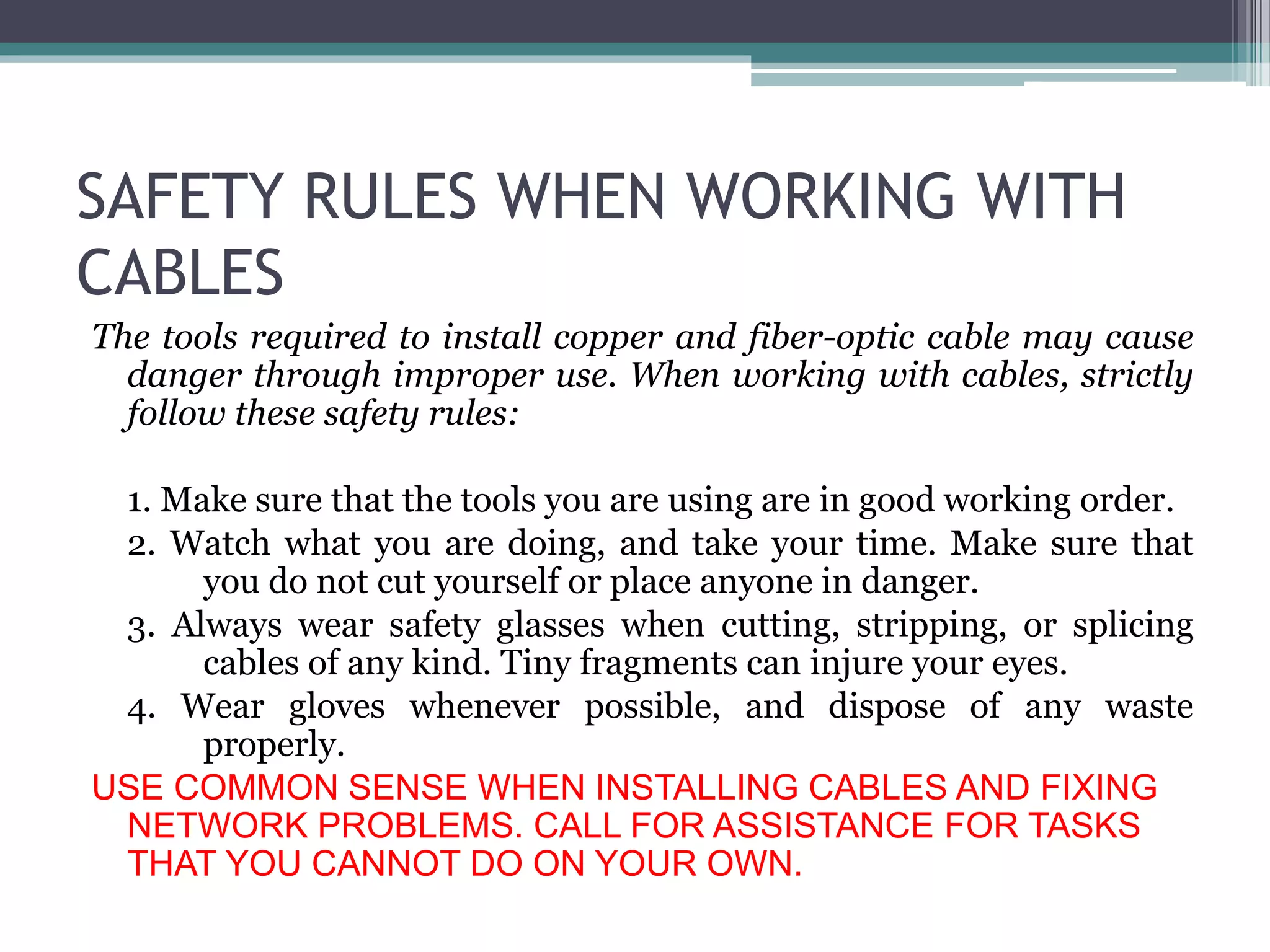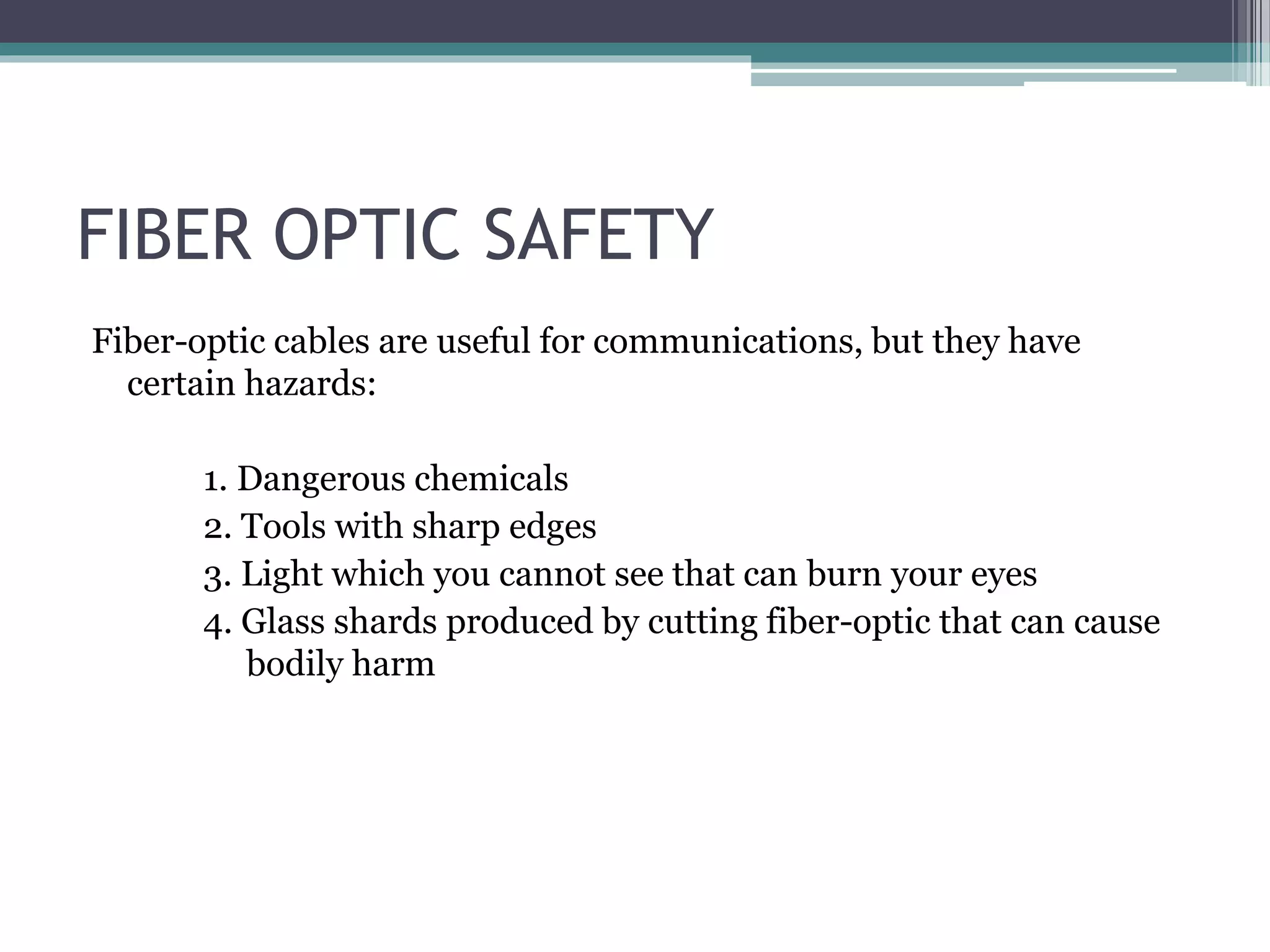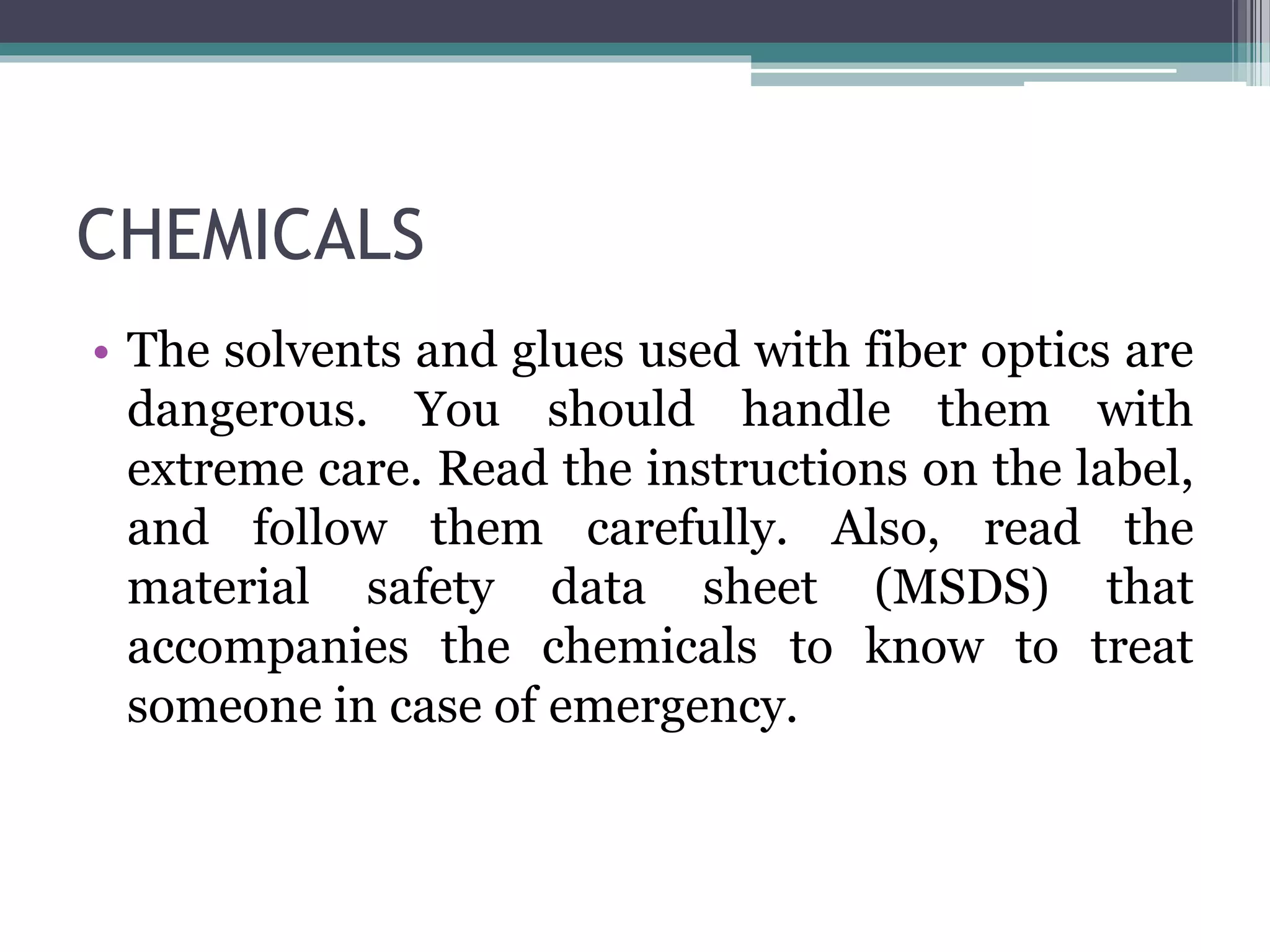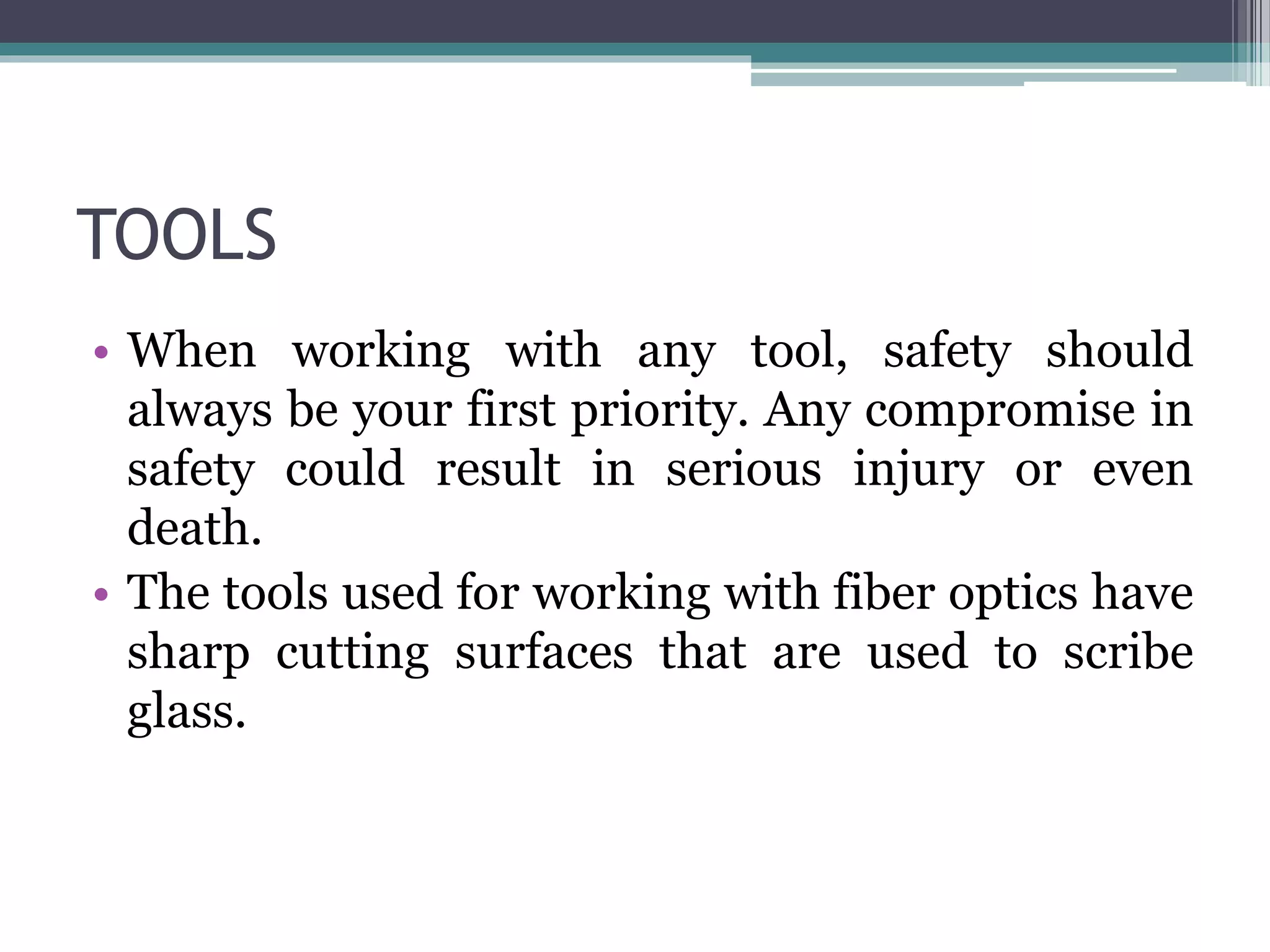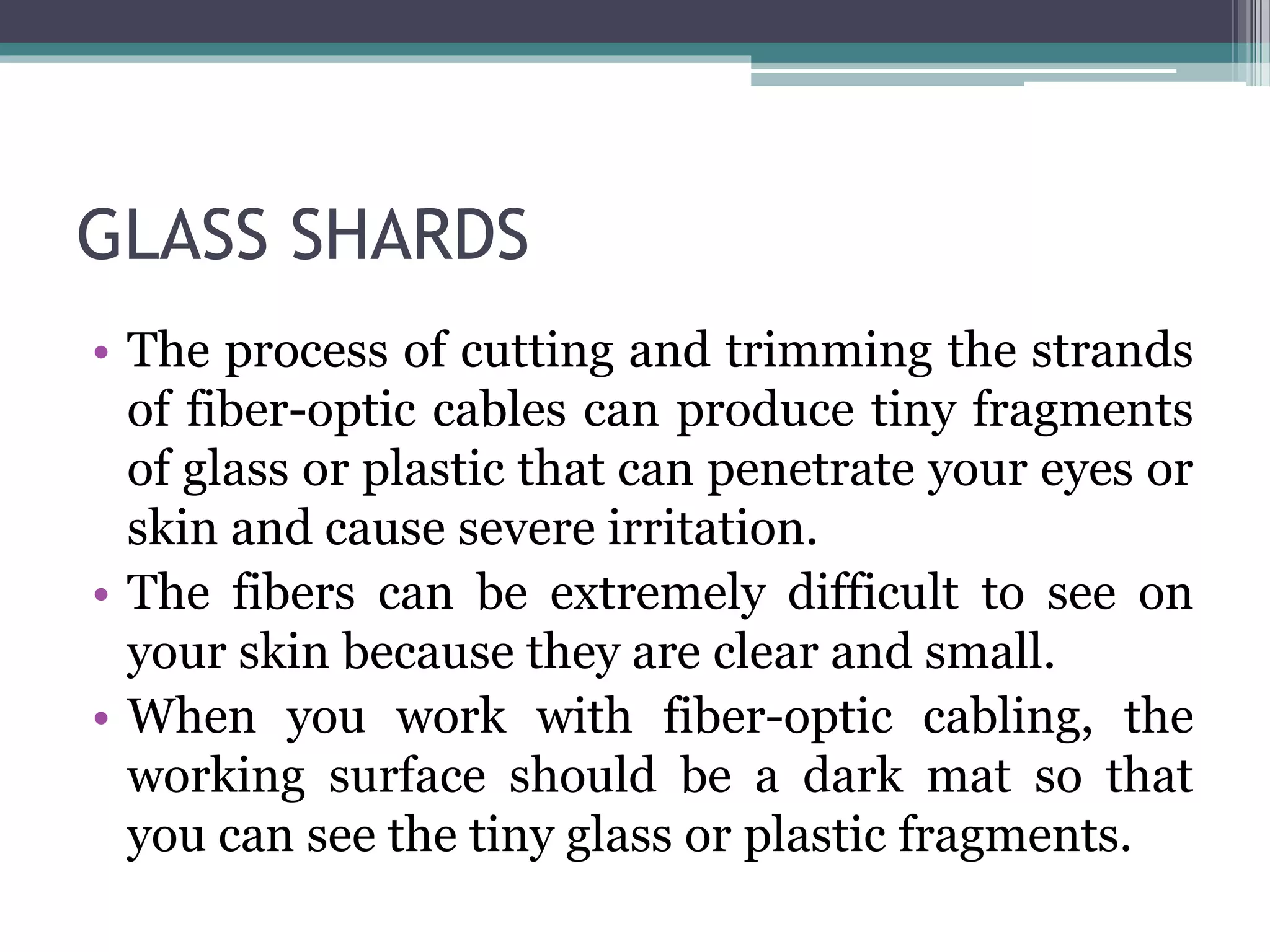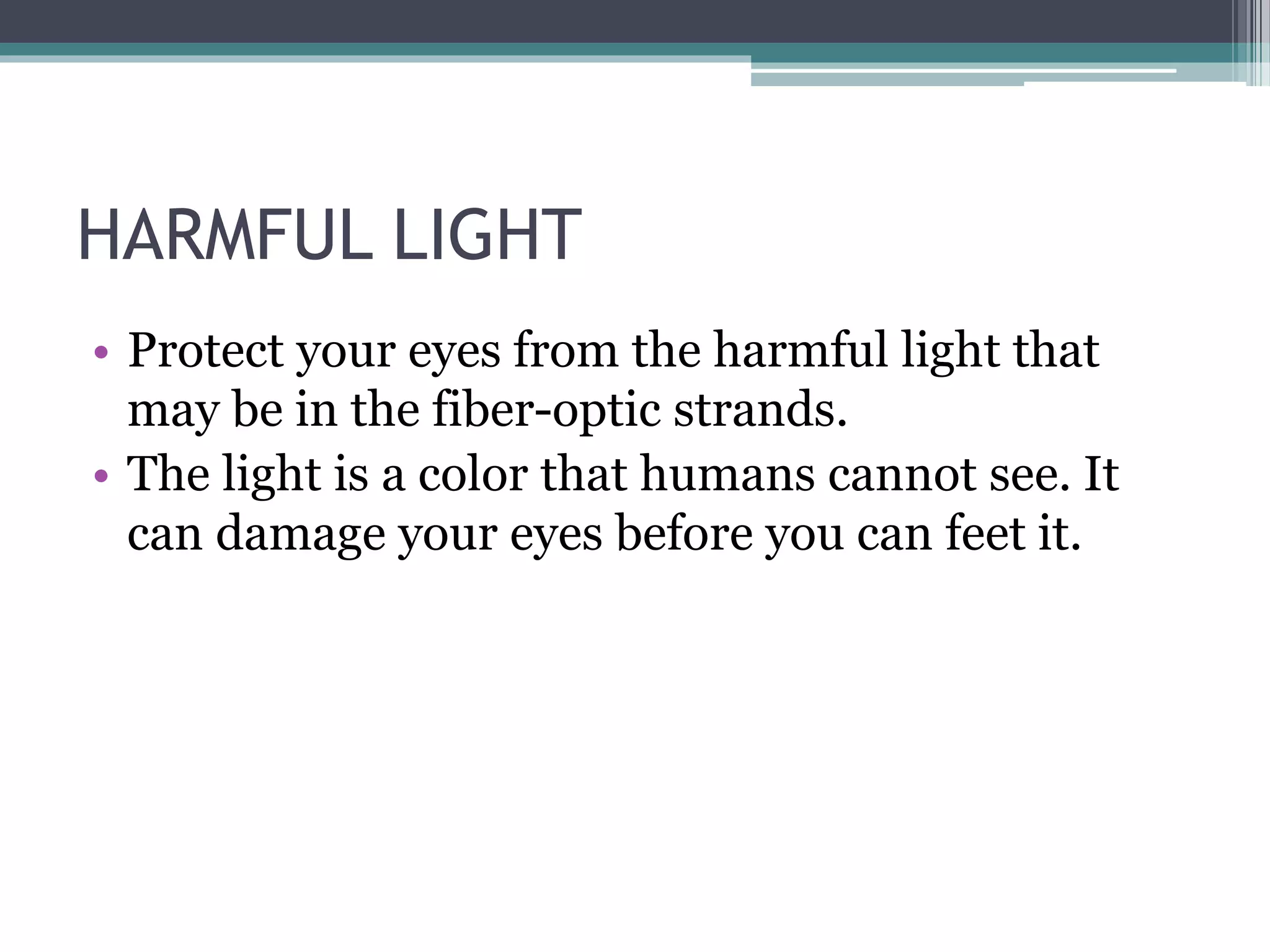The document provides information on safely configuring computer systems and networks. It discusses safety precautions when using ladders and working with cables. When configuring systems, the combination of hardware and software must be set up. The document also outlines dangers of working with fiber optic cables, including harmful chemicals, sharp tools, invisible light that can burn eyes, and glass shards. Proper safety equipment like gloves and glasses should always be worn when working with fiber optic cables.
